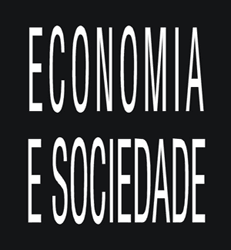Demanda e Distribuição de Renda: uma análise do regime de crescimento econômico brasileiro de 1993 a 2013.
Resumen
O objetivo deste trabalho é investigar empiricamente o regime de crescimento da economia brasileira de 1993 a 2013, à luz da modelagem de Naastepad (2006), que determina se o regime de demanda é wage-led, quando estimulado pelos salários, ou profit-led, quando estimulado pelos lucros. Assim, para determinar o regime de demanda no período, foram estimadas as equações de investimento, exportação e propensão média a poupar. As equações estimadas permitiram o cálculo do efeito multiplicador e do efeito elasticidades do investimento e exportação. Destas estimativas deduziu-se que o regime de demanda no caso brasileiro no período foi um regime wage-led, devido especialmente à baixa participação dos investimentos e exportações na composição da renda nacional. Todas as equações foram estimadas por Mínimos Quadrados Ordinários (MQO) com desvio padrão robusto dos parâmetros. Os testes estatísticos realizados após a estimação sugerem um modelo não viesado e consistente.Archivos adicionales
Publicado
Número
Sección
Licencia
Los autores que publican en esta revista están de acuerdo con los siguientes términos: Los autores mantienen los derechos de autor y conceden a la revista el derecho de primera publicación, con el trabajo simultáneamente licenciado bajo la Licencia Creative Commons Attribution, que permite compartir el trabajo con el reconocimiento de la autoría y la publicación inicial en esta revista. Los autores tienen autorización para asumir contratos adicionales por separado para la distribución no exclusiva de la versión del trabajo publicada en esta revista (por ejemplo, publicar en un repositorio institucional o como capítulo de libro), con reconocimiento de la autoría y la publicación inicial en esta revista. Todo el contenido de la revista, excepto donde se indique, está licenciado bajo una licencia Creative Commons de tipo BY-NC.

